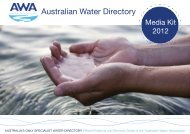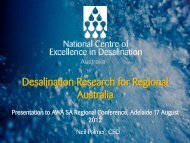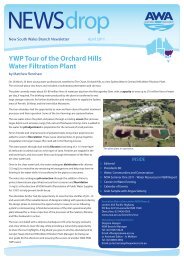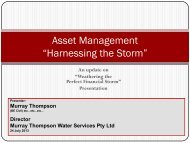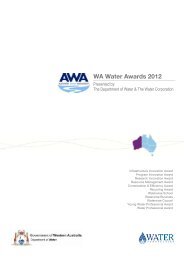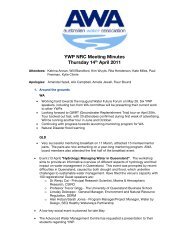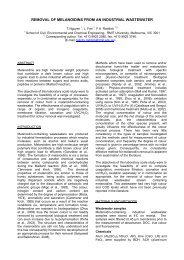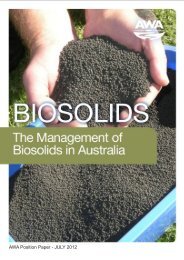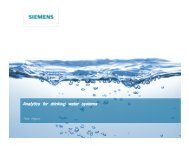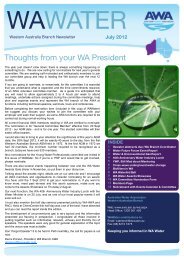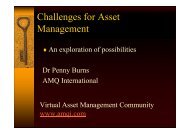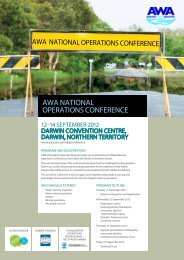National Water Skills Audit - Australian Water Association
National Water Skills Audit - Australian Water Association
National Water Skills Audit - Australian Water Association
- No tags were found...
You also want an ePaper? Increase the reach of your titles
YUMPU automatically turns print PDFs into web optimized ePapers that Google loves.
Figure 3.4.1: Workforce demand forecast to 2017 including all organisations14%12%10%8%6%4%2%5.0% 5.8%3.2% 3.4%4.8%3.9%0%2009 2012 2017Scenario 1 demand (Predicted change)Scenario 2 demand (Unplanned change)Source: <strong>Water</strong> Services <strong>Association</strong> of Australia 2008.Figure 3.4.2: Workforce demand forecast to 2017 excluding Sydney <strong>Water</strong>14%12%10%8%6%4%6.0%9.4%10.7%6.3%13.3%7.3%Mostlikelyoutcome2%0%2009 2012 2017Scenario 1 demand (Predicted change)Scenario 2 demand (Unplanned change)Source: <strong>Water</strong> Services <strong>Association</strong> of Australia 2008.• Infrastructure renewal.• Possible institutional reform.• Potential fiscal constraints for increased capitalexpenditure.The WSAA report also suggests that “it is also possiblethat, in some cases, increased demand is influenced bysignificant downsizing during previous decades” (page24).Figure 3.4.1 and Figure 3.4.2 shows the demandforecasts for workforce in the water utilities under twoscenarios: Scenario 1 incorporates predicted change,and Scenario 2 takes into account unplanned changes.WSAA indicated that the most likely scenario is Scenario1 excluding Sydney <strong>Water</strong>, which is shown in Figure3.4.2. Under this scenario, the urban water industryworkforce would need to increase by six per cent fromcurrent numbers by the end of 2009. Thereafter therequired increase would stabilise to 6.3 per cent by 2012and 7.3 per cent by 2017. Scenario 2 represents a ‘worstcase’ outcome, where the required increase would be9.4 per cent by the end of 2009, and 13.3 per cent by2012. The demand forecasts provided by Sydney <strong>Water</strong>were not consistent with those provided by the majorityof the water utilities, and thus it was excluded from thesample in calculating the most likely scenario.Gap AnalysisWSAA presented predictions based on ‘worst case’,‘best case’ and ‘most likely’ scenarios for the gapsexpected between the supply and demand for labourin the urban water industry. The best case scenario,including the ‘skewing agency’ of Sydney <strong>Water</strong>, had thesmallest gap between supply and demand for labour (asshown in Figure 3.4.1 and 3.4.2).It can be seen from Figure 3.5.1 that the expected gapunder the best case outcome was 39.6 per cent of theexisting workforce (3.9 per cent increased demand plus36 per cent [rounded up] diminished supply).20 ICE WaRM • <strong>National</strong> <strong>Skills</strong> <strong>Audit</strong> (Phase One) Report



